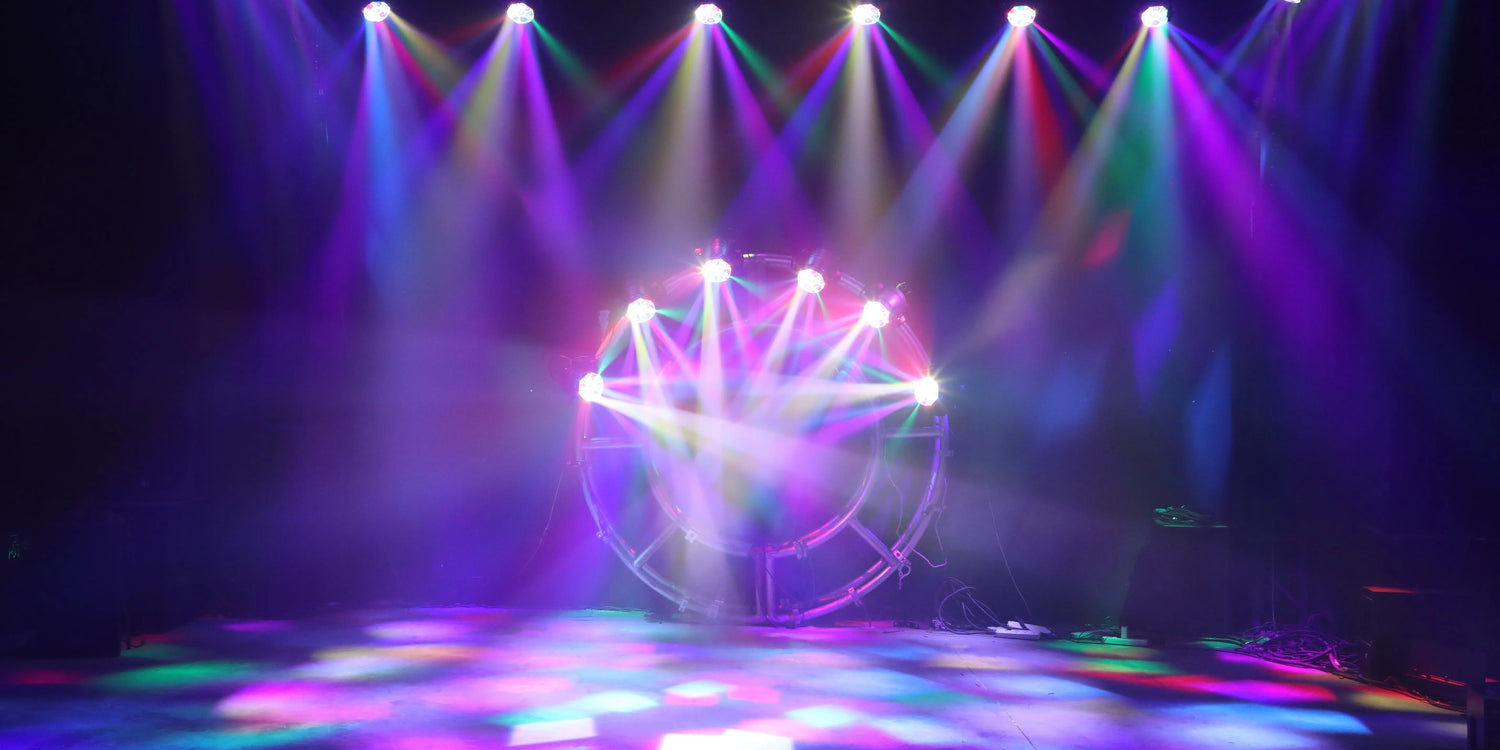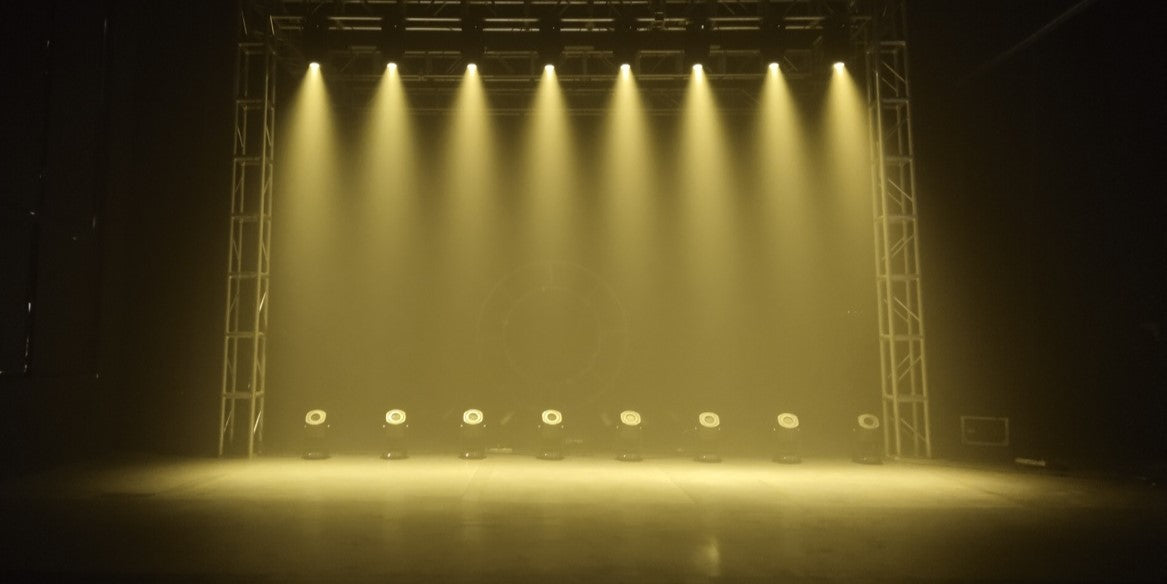Every stage performance depends on more than just powerful lights — it relies on the hidden details that hold everything together. From mounting to signal flow and protection, the right accessories are what transform a basic setup into a professional lighting system. They keep your fixtures secure, your cables organized, and your show running without interruption.

1. Lighting Stands & Tripods — The Foundation of Every System
Every professional lighting configuration starts with one principle — stability.
A stand is not just a physical support; it defines fixture height, projection angle, and the mechanical balance of the entire rig.
Choosing the right structure ensures both safety and optical consistency throughout the performance.
Here’s what truly matters when selecting a lighting stand:
-
Height & Load Capacity:
The stand must support both the vertical reach and structural load of your fixtures.
For most event and touring applications, select stands extending 2–3 meters with a minimum safe load of 10–15 kg per arm.
This balance provides optimal beam coverage while maintaining center-of-gravity stability. -
Locking & Adjustment Mechanisms:
Precision-machined collars and dual-stage quick-release locks allow smooth height control and prevent slippage under variable load — essential for moving heads and automated fixtures. -
Material & Structural Design:
Aluminum alloy (6061-T6 or equivalent) offers high tensile strength at low weight, perfect for mobile setups.
For permanent installations or heavy multi-fixture rigs, cold-rolled steel tubing delivers superior rigidity and vibration damping. -
Safety Reinforcement:
Treat every stand as a load-bearing element.
Apply sandbags, guy wires, or safety chains to counterbalance torque and lateral motion — especially on uneven floors or outdoor stages exposed to wind or audience vibration.
💡 Pro Insight: A properly rated stand is part of your rigging system. Always follow manufacturer load charts and limit continuous weight to 75–80 percent of the rated capacity for long-term reliability.
2. Clamps, Hooks & Safety Chains — Secure Every Fixture
Rigging hardware may look simple, but it determines overall system integrity.
Each connection point must sustain static and dynamic loads without deformation or drift.
- Match clamp type and diameter to the truss or bar used (commonly Ø35–50 mm).
- Use M10 or M12 bolts for heavier fixtures, and always add a secondary safety chain rated above fixture weight.
- Inspect contact points before every show — bent plates or worn threads compromise the entire rig.
A secure mount protects your equipment and guarantees precise fixture positioning throughout the performance.
3. DMX Cables & Power Extensions — The Lifeline of Your System
A stable lighting network depends on clean data and uninterrupted power.
Even a minor signal drop can desynchronize color, strobe, or pan movements.
Best Practices:
- Use 3-pin or 5-pin DMX cables with 110–120 Ω impedance and braided shielding to minimize electromagnetic interference.
- Keep DMX lines physically separated from power runs by at least 30 cm (12 in).
- Terminate the chain with a 120 Ω resistor to prevent signal reflection.
- For outdoor applications, choose cables with reinforced PVC jackets and IP-rated connectors.
💡 Pro Insight: Label both ends of each DMX line and coil them loosely after use — proper cable management prevents internal conductor fatigue and preserves long-term signal integrity.
4. Flight Cases — Protection on the Move
Transport stress is one of the main causes of fixture damage.
A well-built flight case preserves calibration and finish by absorbing mechanical shock and isolating equipment from moisture or dust.
Look for:
- High-density foam inserts precisely cut for each model.
- Metal-reinforced frames and corners for structural endurance.
- Heavy-duty casters and lockable latches for safe, efficient mobility.
Consistent use of protective cases extends equipment lifespan and reduces maintenance downtime between events.
5. Building a Reliable Lighting Foundation
Professional lighting is an engineering discipline as much as an art.
Stability, connectivity, and protection determine whether your system performs perfectly or fails mid-show.
Choosing the right accessories — stands, clamps, cables, and cases — creates a foundation you can trust night after night.
👉 Explore more professional lighting solutions at https://betopperdj.com/




Hinterlasse einen Kommentar
Alle Kommentare werden vor der Veröffentlichung geprüft.
Diese Website ist durch hCaptcha geschützt und es gelten die allgemeinen Geschäftsbedingungen und Datenschutzbestimmungen von hCaptcha.